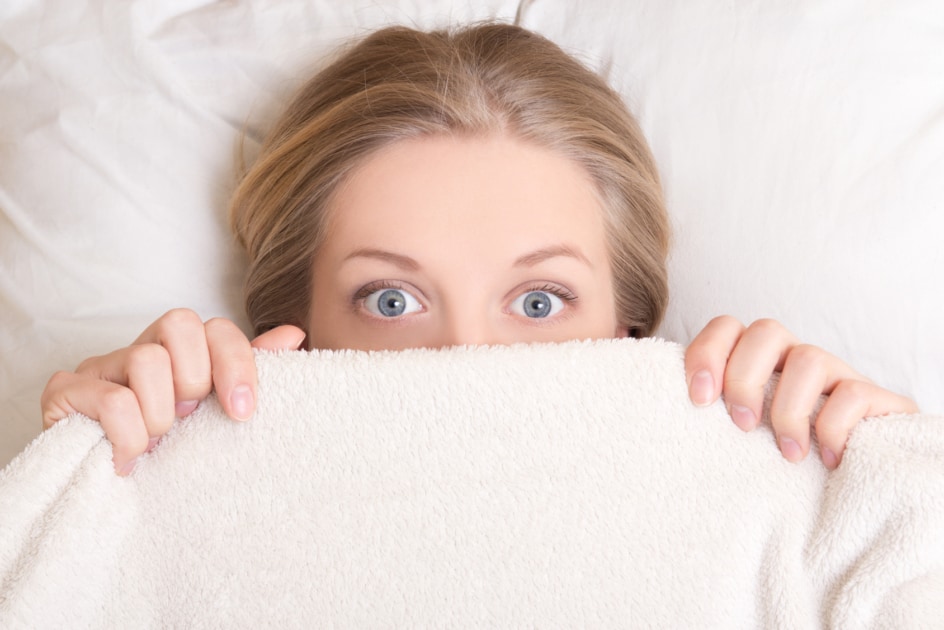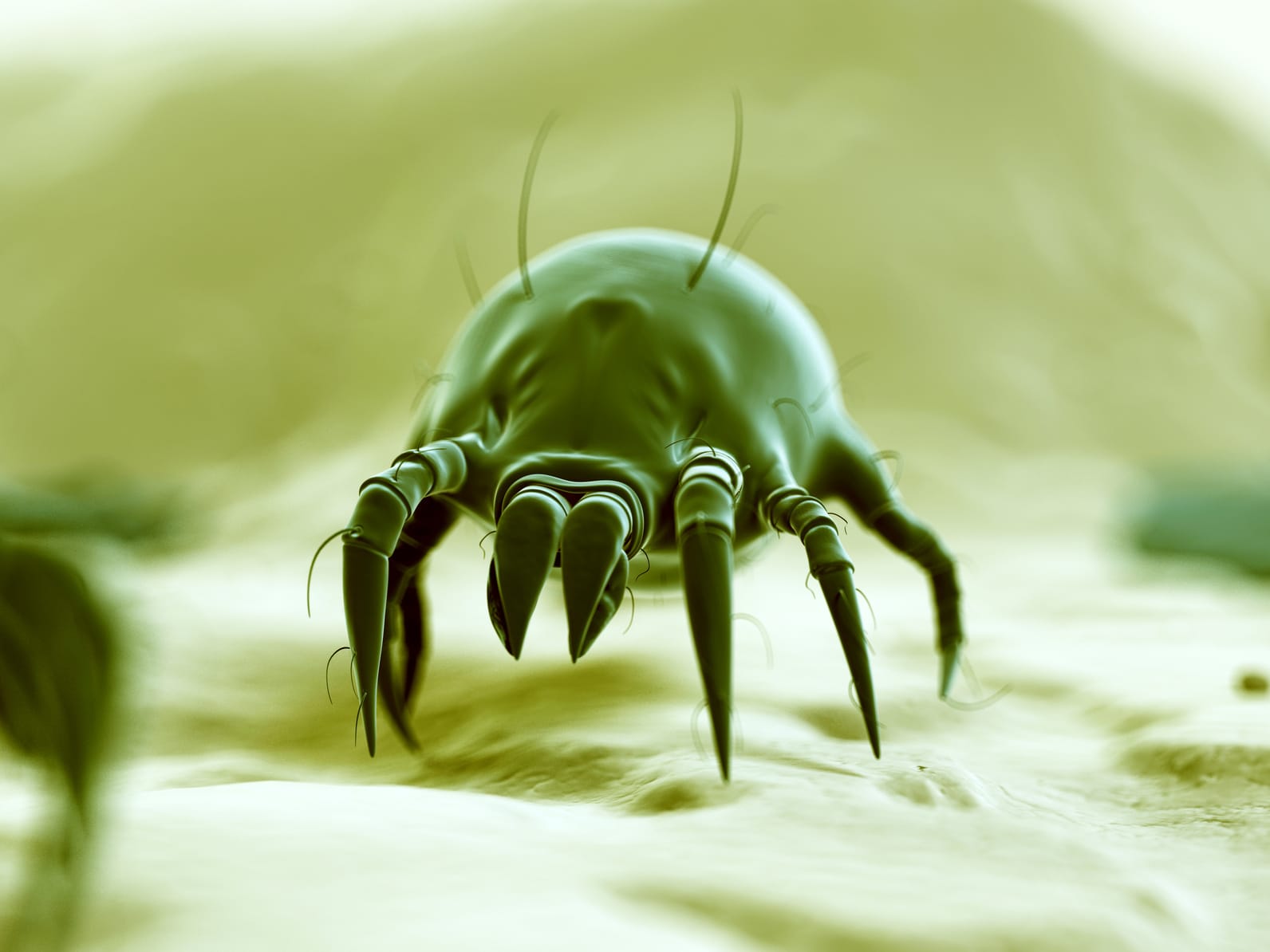Dust Mites, Dander, And Dirt, Oh My!
You may be surprised at some of the things lurking in your pillows and on household surfaces, including dust mites. Don't be creeped out, learn how to combat them!

There’s a member of the spider family, Dermatophagoides pteronyssinus, also known as the common house dust mite, that nobody wants to talk about. If you’ve ever seen one under a microscope, these critters look like the spawn of a crab, a rhinoceros, crossed with a monster from a science fiction movie. And they’re living in your house.
What Are Dust Mites?
Invisible to the naked eye, dust mites are a teeny tiny fact of life everywhere that humans reside. Their favorite food? The dead skin cells you shed each night while sleeping. Human beings, like most mammals, are constantly shedding dead skin. Every time you scratch your head or that mosquito bite, flakes of your skin float through the air and eventually settle with other dust particles onto most surfaces. That visible material is what we “dust” away when doing our household chores.
People are a bit squeamish about dust mites, but actually, they serve a purpose. Consider them your own microscopic cleaning crew, eating the dead skin from you and your pets. While dust mites themselves are relatively harmless, their waste, called “dung,” contains a protein which is a common allergen for many people. Sometimes it’s tough to tell the difference between a more generic dust allergy and one that’s specifically dust-mite related, but that tends to be irrelevant. Dust is where the allergens are.
That Pillow Urban Legend
We’ve all heard the urban legend of how if you don’t change your pillow frequently, eventually half of its weight will be dust mite dung. While it sounds interesting, it’s not 100% accurate. Pillows do accumulate all manner of microscopic dust and allergens, including dust mite dung. But dust has many more inclusions than that. There are all sorts of pollen, dander, microscopic plankton shells from oceans long dead, dust from African deserts, pollution from cars, powdered mouse droppings—you name it. You could go crazy trying to clean and dust it all into oblivion. But without a team of scientists from NASA, you’ll never get your house so clean that it will be totally free of dust or the allergens and contaminants therein.
Things You CAN Do
What you can do to fight allergens is reduce dust as best you can. It’s one of those things where you need to settle for progress rather than perfection. Here are some tips:
1. Vacuum regularly. Use a vacuum cleaner with a HEPA grade filter, which will remove a surprising amount of the particles that vacuuming kicks up. The great thing about vacuuming is that regular household dirt attracts a lot of the really, really small stuff and bonds to it. Some of the smaller particles do get thrown into the atmosphere, and unfortunately, there’s nothing you can do about that (except dust it later).
2. Dust regularly. Feather dusters simply send particles floating back into the air. You may find the newfangled disposable dusters easier to deal with. You’ve seen them in the grocery store: a plastic handle with disposable synthetic fiber covers. These are great for picking up the finest of the fine. And when the duster holds all it can, don’t shake it out, throw it out.
3. Wash bedding in hot water. Based on studies of Dermatophagoides pteronyssinus, weekly washing in detergent and hot water is effective in killing dust mites and removing allergens from clothing and bedding. Keep in mind, though, that if you use a clothesline to dry sheets and towels outside, you could bring pollen, another allergen, in the house. If you’ve got pollen allergies, consider using a clothes dryer after a hot water wash.
4. Shake out your pillows and comforters and blankets and rugs. Outside. Better yet, do what they did in the old days and hang them on a clothesline or deck railing and beat them with a rug or carpet beater. You won’t believe how much dust you can dislodge.
5. Use pillow protectors. Your sinuses are in your head and face, which rest on your pillow at night. If your pillow is full of dust, that’s ground zero for the way that dust is going to affect you. A pillow protector is a great way to stop dust from entering the interior of your pillow. It’s a high thread count zippered case that acts as a barrier for most of the very fine particles that can get through a pillow-case. You can purchase them wherever you buy linens. They should be washed regularly, because they will collect dust on their surface, like, well, everything in the world.
6. If you think you have dust-related allergies, change your pillows every six months. You can try washing them if they’re washable. But it’s easier to change them. You may say, “but my premium goose down pillows were so expensive!” Save the expensive pillows for company and buy yourself a few inexpensive, hypoallergenic foam or fiber-filled pillows at the discount store. Use a pillow protector, and plan to swap your pillows out for fresh ones every six months. And if you’re not willing to change your pillows that frequently, that’s when you can look at a picture of an actual dust mite—you just might change your mind!

Edward Higgins
Edward Higgins is a freelance writer, artist, home chef, and avid fly fisherman who lives outside of Portland, Maine. He studied at Skidmore College and Harvard University. His article 10 Best Edible Insects appears in the 2020 Farmers' Almanac.








Agreed Nell. If you have high humidity in your home dust mites thrive. Keep the humidity low and light up your home with plenty of natural sunlight. We wash bedding weekly and all have pillow protectors. A cool room and dust mite free pillow make for a lovely sound night’s sleep.
i found all natural cotton pillows at a fair , cost around 50 $ each . they are meant to be washed and dried hot ! very easy too . now i wash my pillows often . i believe they have a web site .
I read somewhere on the internet that if you put your pillows or sheets in a plastic bag and put them in the freezer for two days it will kill the dustmites, and after the two days put them in the dryer to take the dampness out of them! I like this idea because I have a lot of old throw pillows and this I think will make them safer! Any comments about this would be helpful !
Each time I wash my sheets I place my pillows in the dryer for about 15 minutes. It helps kill the dust mites and also plumps them.
A good reminder to be changing out those pillows.
If you can’t/don’t switch them out every six months toss them in a hot dryer for 20 minutes.
Special and selected fungi have been photographed growing out of house dust mite droppings. The fungi are helpful to the mite because they hold essential vitamins and produce ‘smells’ that attract other mites looking for a mate. Sleeping with disease-causing mites is not recommended by any doctor or allergist. Mattresses, pillows, duvets etc. can all be infested if the conditions (damp, dark, and still) are right. Please inform the public.
Thank you for the information!